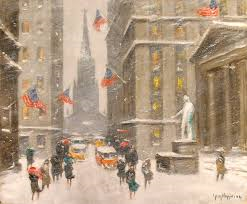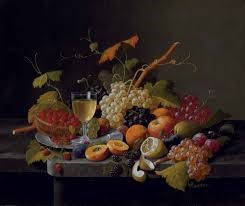I am ordinarily the soul of benevolence and good will toward all humanity, but there are occasional dark days, often caused by the failure of some museum curator to return my calls, when my spirit turns peevish and I entertain myself by playing a game of my own invention called “Catalogues Raisonnés in Hell.”
Catalogue raisonné, a French term we have imported into English, literally means, “reasoned list.” The catalogue raisonné for an artist is a complete list of known works by that artist, along with the provenance of each painting, its exhibition history, and its current location if known. Inclusion in an artist’s catalogue raisonné is mandatory if a painting is to be accepted by the art market as genuine. Such reference books these days are often assembled by a committee of scholars, sometimes with the assistance of the artist’s family or heirs if the artist is recently deceased.
Given the enormous amount of scholarly labor involved, it helps if the artist is a major artist whose work shows variety and artistic growth. Many artists, however, find a profitable subject and devote their artistic careers to a seemingly endless series of miniscule variants on a theme. In playing “Catalogues Raisonnés in Hell,” I weigh which of those artists I would like to assign to the miscreant who has not called me back. “Let me think,” I purr to myself, “Which artist should I assign to ____________? — Bruce Crane? Henry Pember Smith? Or what about Guy Wiggins?”
Consider the case of Guy Wiggins (1883-1962), whose work appears below.
 The son of a respected American landscape painter, Wiggins studied with William Merritt Chase and Robert Henri and seemed poised to become an important figure in American art. But early in his career, Wiggins had an exhibition of paintings depicting New York City in snow. The show was enormously popular, and Wiggins found himself trapped. From then on, whenever he tried to do anything else, collectors would say, “Yeah, yeah, Guy. Nice, but what I really want is one of your paintings of Wall Street in the snow. With flags, please.”
The son of a respected American landscape painter, Wiggins studied with William Merritt Chase and Robert Henri and seemed poised to become an important figure in American art. But early in his career, Wiggins had an exhibition of paintings depicting New York City in snow. The show was enormously popular, and Wiggins found himself trapped. From then on, whenever he tried to do anything else, collectors would say, “Yeah, yeah, Guy. Nice, but what I really want is one of your paintings of Wall Street in the snow. With flags, please.”
Perhaps a stronger character would have turned his back on the siren call of easy sales, but Wiggins was not such a man. Over the next 40 years he churned out New York snow scenes by the dozens. He could do them in his sleep and probably did. He definitely used libations as fuel, and his works vary enormously in quality. I tell my clients, “There are drunk Wigginses and there are sober Wigginses. There are also a fair number of fakes around. My job is to help you see which are which.”
I get to examine Wiggins’ paintings one or two at a time, but imagine a curator condemned to the Infernal Regions, strapped to a seat while imps bring an unending line of New York snow scenes signed Wiggins which he or she has to pronounce genuine or fake. Perhaps with jabs of a pitchfork for incorrect answers. Oh, it’s a scene to make one shudder, rightly enough.
Oddly, some scholars actually volunteer to do catalogues raisonnés on artists like Wiggins. Other scholars are warier. Judith O’Toole, the director of the Westmoreland Museum of American Art, [Oh, all right, Judy – you’re the highly accomplished Richard M. Scaife Director/Chief Executive Officer of the Westmoreland etc. There.] almost found herself trapped when working on a book about Severin Roesen (1815- c. 1872), a German-born artist who settled in Western Pennsylvania and turned out paintings of fruit and flowers by the score, most of them extremely similar.

Word got out among dealers and collectors about the book-in-progress, and many of them began calling it the Roesen catalogue raisonné. O’Toole quickly put them to rights. “I didn’t have the time or the near-lifetime commitment to Roesen required to undertake a catalogue raisonné,” she told me. “I simply wanted to get my research out into the world and move on to other artists and subjects.” If she hadn’t forcefully nixed the idea of a catalogue raisonné, O’Toole would doubtless be still poring over photos of the latest purported Roesen 25 years later. As it is, one of my hapless curators in Hell will have the job.
Yet while a large retrospective exhibition of Roesen’s work might be enough to put you off fruit and flowers for the rest of your life, taken individually his best works are charming and impressive. Likewise, Guy Wiggins, when he was on his game, was a good painter, and one of his better works can hold its own in any American Impressionist collection.
So don’t be hesitant about acquiring a work by an artist who, because of his narrow focus or the uneven range of her technical achievement, has been consigned by art history to minor status if not outright hackdom. Look for quality, not name. I can help you with this.
And curators, return my calls.

